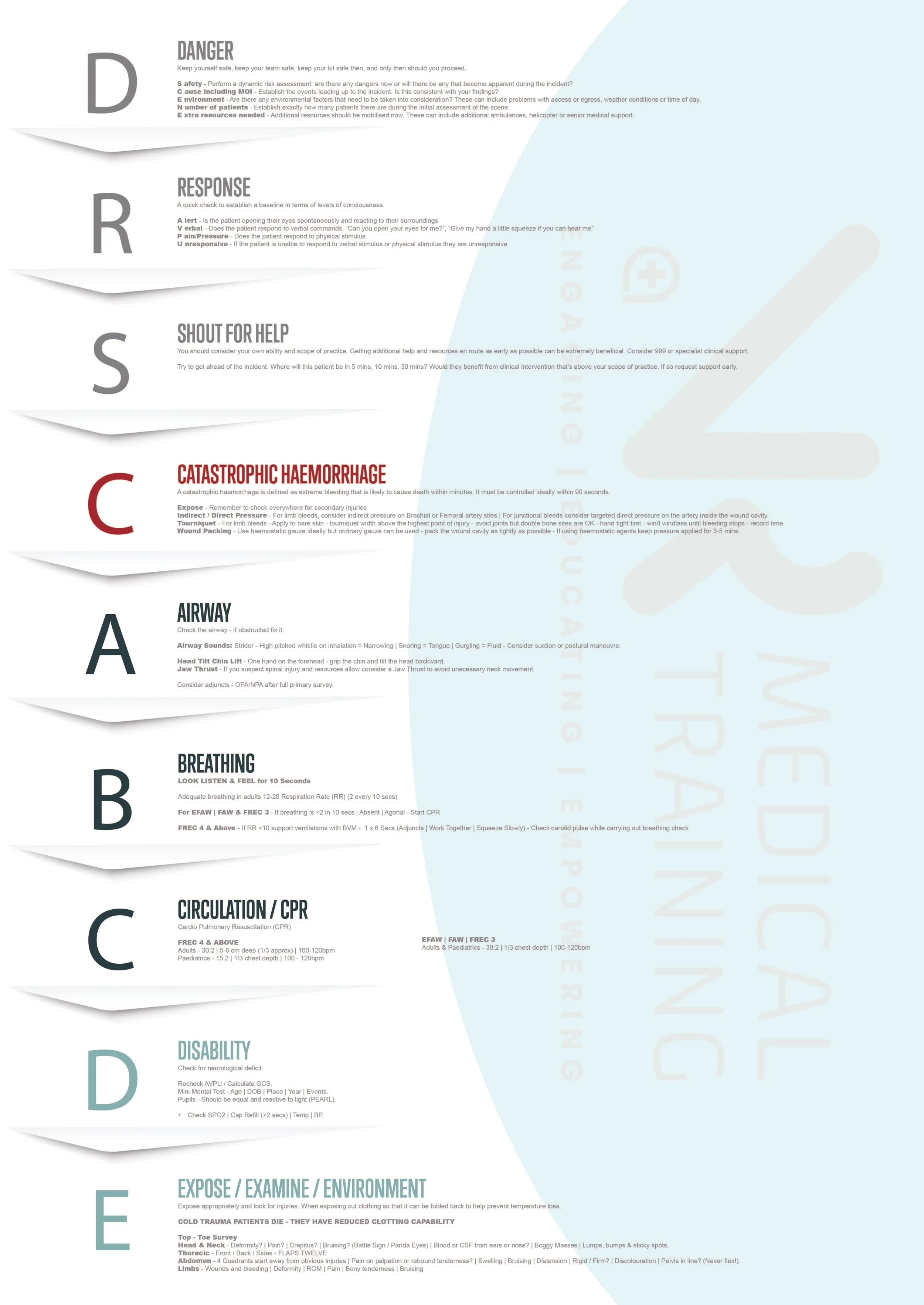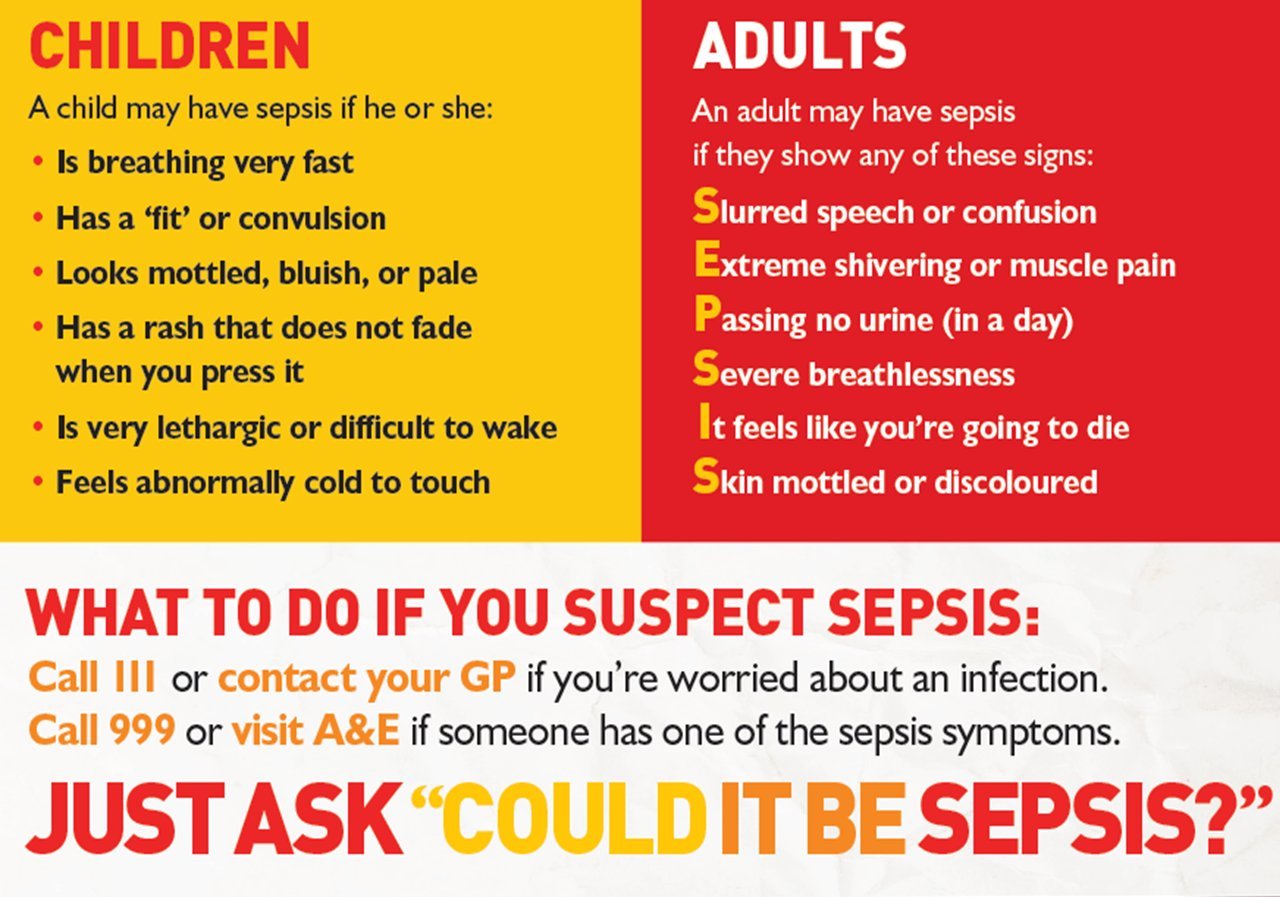
FREC 4 Resources
Note that questions are visable to other members of this group.
Pre Course Reading List:
Approx 20 hours of reading in the following subjects:
Further Reading:
We have provided some resources to help you but you may also wish to purchase the following books/Apps for reference:
JRCALC Clinical Guidelines
We recommend an app subscription so that guidelines are automatically updated.
Useful Websites & Apps
Snap Medic IOS App > | Android App >
MD Calc IOS App > | Android App >
NEWS 2 Calculator IOS App > | Android App >
WHAT3WORDS IOS App > | Android App >
JESIP (Joint Emergency Services Interoperability Programme) >
Free downloadable prompt cards.
Designed to be printed A5 & Laminated
‘Normal’ physiological parameters for children and adults:
Patient Assessment:
Primary Survey:
The Primary Survey, also known as the initial assessment, is intended to assist emergency responders in identifying imminent risks to life. Immediate life threats usually involve the patient's ABCs, and each one gets fixed as it is identified.
Life-threatening problems MUST be identified immediately. This should be carried out in order of priority to ensure that the most important actions are taken in a logical order and that nothing is overlooked.
Secondary Survey:
Following the initial assessment, conduct a targeted history and physical exam as a secondary survey. It is assumed that life-threatening issues have been identified and resolved. If CPR was used during the process, you may not have reached this point.
The focused history and physical exam may involve an examination focusing on a specific injury or medical complaint, or it may be a rapid examination of the entire body which should take no more than 3 minutes.
The secondary survey is a systematic method for detecting any bleeding or fractures. This system begins at the head and progresses down to the legs.
Essential Terms To Know
Oxygen/entonox administration guidelines:
Medication Checks - IMPORTANT
Spotting the sick child:
Sepsis:
The UK Sepsis Trust provide a number of resources for responders and those looking after patients pre hospitally.
Sepsis occurs when the immune system goes into overdrive in response to infection and has been historically and inaccuratley referred to as blood poisoning. In sepsis the immune system starts to destroy healthy tissue and can affect circulation. This can, if left untreated, cause organ failure and ultimately death.
Spotting Sepsis
Note - NEWS 2 can only be used for patients over 16 years & NON Pregnant
Cardiac Conduction System
Life in the fast lane is a great resource for learning more about ECGs.
ECG Basics
Normal & Abnormal Heart Rythyms
Major Incidents & Triage
Major Incident Definition:
An event or situation with a range of serious consequences which requires special arrangements to be implemented by one or more emergency responder agency.Notes“Emergency responder agency” describes all category one and two responders as defined in the Civil Contingencies Act (2004) and associated guidance.A major incident is beyond the scope of business-as-usual operations, and is likely to involve serious harm, damage, disruption or risk to human life or welfare, essential services, the environment or national security.A major incident may involve a single-agency response, although it is more likely to require a multi-agency response, which may be in the form of multi-agency support to a lead responder.The severity of the consequences associated with a major incident are likely to constrain or complicate the ability of responders to resource and manage the incident, although a major incident is unlikely to affect all responders equally.The decision to declare a major incident will always be a judgement made in a specific local and operational context, and there are no precise and universal thresholds or triggers.
JESIP (2024). Definitions. [online] JESIP Website. Available at: https://www.jesip.org.uk/joint-doctrine/definitions/
10 Second Triage (TST)
The 4 Stages Of A Major Incident:
Most major incidents can be considered to have four stages:
The initial response;
The consolidation phase;
The recovery phase; and
The restoration of normality.
Major Incident Procedures a Guide for Local Businesses in Tower Hamlets. (n.d.). Available at: https://www.towerhamlets.gov.uk/Documents/Community-safety-and-emergencies/Major_Incident_Procedure_A_Guide_for_Local_Business.pdf














